Asia
Sustainable Travel: 10 Eco-Friendly Destinations That Will Inspire Your Next Adventure
The Rise of Sustainable Tourism: Why It Matters
Sustainable tourism is no longer just a buzzword; it’s becoming a necessity in our rapidly changing world. As travelers, we have the power to make a significant impact on the environment and local communities we visit. By embracing eco-tourism and responsible travel practices, we can minimize our carbon footprint while maximizing positive experiences.
The environmental impact of traditional tourism can be devastating, from increased pollution to habitat destruction. However, sustainable tourism offers a solution that benefits both travelers and destinations. By supporting eco-friendly accommodations, participating in conservation efforts, and respecting local cultures, we contribute to sustainable development in the places we visit.
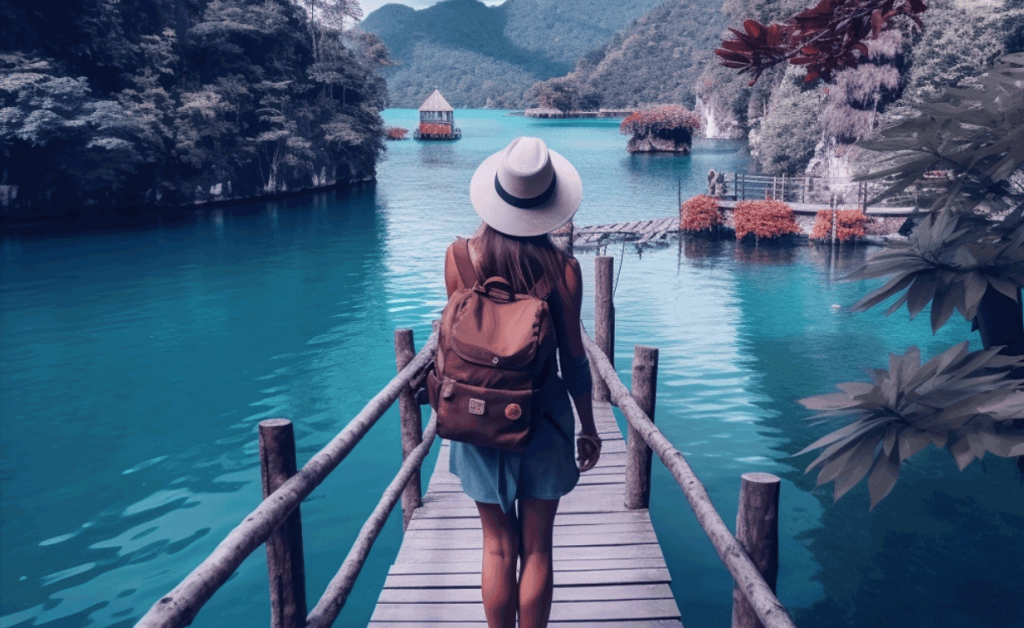
Reducing our carbon footprint while traveling isn’t just about feeling good—it’s about preserving the beauty and diversity of our planet for future generations. From choosing public transportation to supporting local businesses, every decision we make as travelers can contribute to a more sustainable future.
As consumers become more environmentally conscious, the demand for sustainable travel options is skyrocketing. By choosing responsible travel, we send a powerful message to the tourism industry that sustainability matters. This shift in consumer behavior is driving positive change, encouraging more businesses to adopt eco-friendly practices and invest in sustainable development.
The rise of sustainable tourism isn’t just a trend—it’s a movement that’s here to stay. By embracing this approach to travel, we can explore the world while ensuring its preservation for years to come. It’s time to make sustainable tourism the norm, not the exception.
Costa Rica: A Pioneer in Eco-Friendly Tourism
Costa Rica stands as a shining example of eco-friendly tourism done right. This small Central American nation has successfully harnessed its incredible biodiversity to create a thriving, sustainable tourism industry. With over 25% of its land dedicated to national parks and protected areas, Costa Rica offers visitors unparalleled opportunities to experience pristine nature firsthand.
The country’s commitment to renewable energy is equally impressive, with nearly 100% of its electricity generated from clean sources like hydropower and wind. This dedication to sustainability extends to accommodations, where eco-lodges blend seamlessly with their surroundings, minimizing environmental impact while maximizing guest comfort.

Wildlife conservation efforts in Costa Rica have yielded remarkable results, protecting endangered species and preserving crucial habitats. Visitors can witness this success story up close, observing rare creatures like the resplendent quetzal or the elusive jaguar in their natural environments.
By choosing Costa Rica as your next travel destination, you’re not just embarking on an unforgettable adventure – you’re supporting a nation that prioritizes the planet’s well-being. Experience the magic of sustainable tourism and discover why Costa Rica truly deserves its reputation as a global leader in eco-friendly travel.
Slovenia: Europe’s Hidden Green Gem
Slovenia, often overlooked by travelers, is rapidly emerging as Europe’s hidden green gem. The country’s capital, Ljubljana, was named European Green Capital in 2016, setting a high standard for sustainable urban living. With its pedestrian-friendly city center and extensive network of cycling paths, Ljubljana exemplifies eco-friendly transportation at its finest.
Beyond the capital, Slovenia’s commitment to sustainable agriculture is evident in its thriving farm-to-table culture and organic food production. The country’s pristine alpine regions offer unparalleled opportunities for eco-tourism, with well-maintained hiking trails and responsible wildlife viewing.
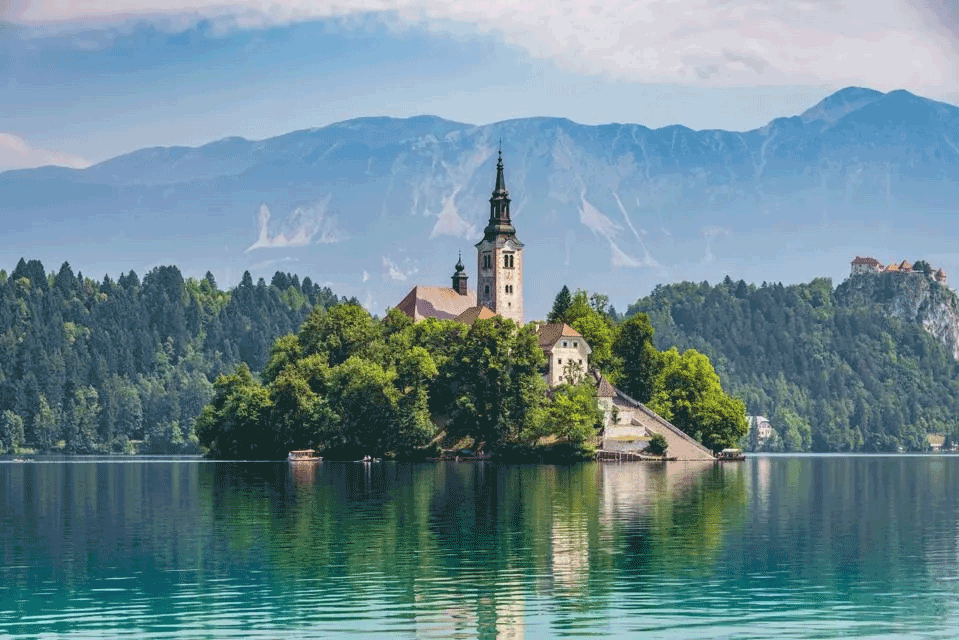
No discussion of Slovenia’s natural beauty is complete without mentioning the iconic Lake Bled. This crystal-clear alpine lake, surrounded by mountains and featuring a picturesque island church, embodies the country’s commitment to preserving its natural wonders for future generations.
By choosing Slovenia for your next European adventure, you’re not just treating yourself to breathtaking landscapes and rich culture – you’re supporting a nation at the forefront of sustainable tourism and environmental conservation.
Palau: Protecting Paradise Through Innovative Measures
Palau, a pristine archipelago in the western Pacific, has taken groundbreaking steps to safeguard its natural wonders. The Palau Pledge, a mandatory eco-pledge for visitors, is just the beginning of this nation’s commitment to conservation. By implementing strict marine protected areas and enforcing sustainable fishing practices, Palau has become a global leader in coral reef protection. The government’s collaboration with eco-tour operators ensures that tourism and conservation go hand in hand, creating a model for sustainable development.
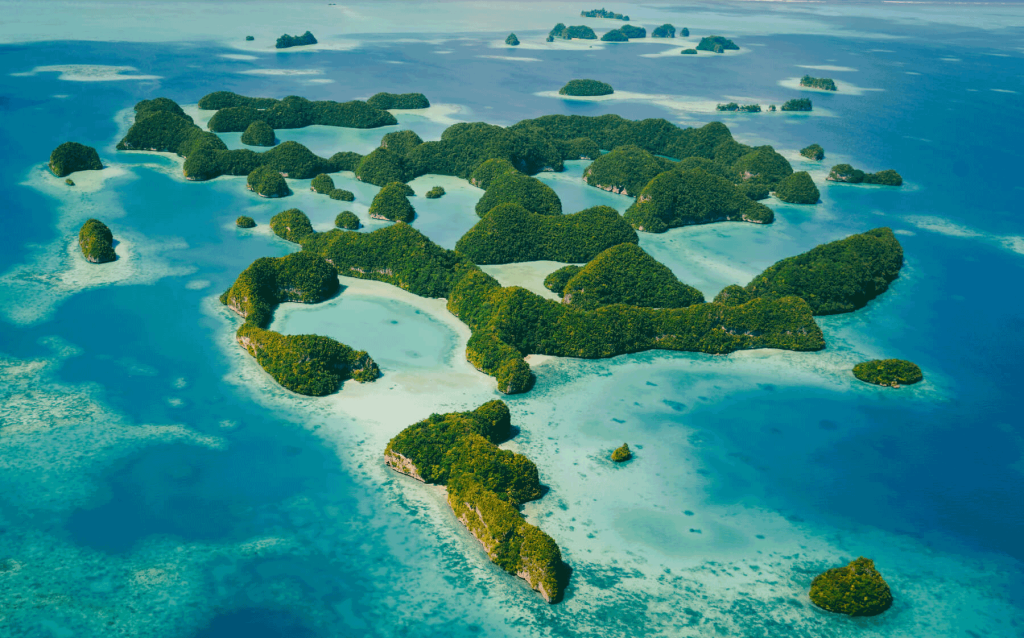
Palau’s innovative measures not only preserve its breathtaking landscapes and rich biodiversity but also secure a sustainable future for its people. As the world grapples with environmental challenges, Palau stands as a shining example of how small nations can make a big impact. By visiting Palau and supporting its conservation efforts, you’re not just experiencing paradise – you’re actively participating in its protection for generations to come.
New Zealand: Adventure Tourism with a Sustainable Twist
New Zealand has long been synonymous with adventure tourism, but now it’s taking a bold step forward by infusing sustainability into its thrilling experiences. The country’s Tiaki Promise, a commitment to care for the land and people, is at the heart of this transformation. Visitors can immerse themselves in Maori culture while participating in eco-friendly activities that preserve the nation’s stunning landscapes.
Eco-sanctuaries across the country offer unique opportunities to witness rare native species in their natural habitats, all while supporting crucial conservation efforts. Adventure seekers can choose from a wide array of carbon-neutral activities, from bungee jumping to white-water rafting, knowing their adrenaline rush isn’t coming at the expense of the environment.
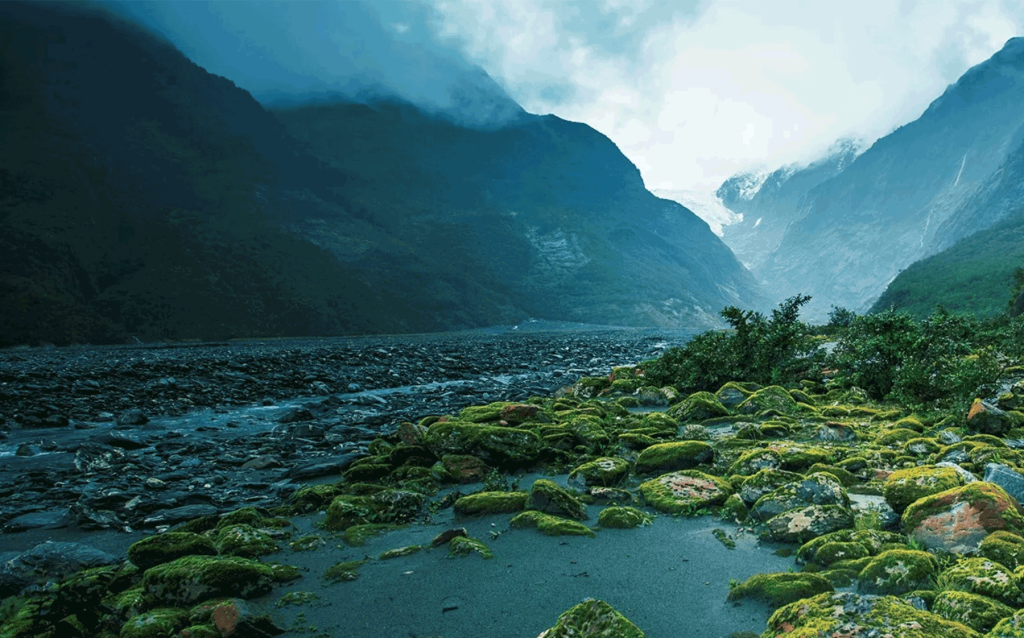
Sustainable accommodations are on the rise, ranging from off-grid wilderness lodges to eco-friendly urban hotels. These options not only reduce your carbon footprint but also provide an authentic, immersive experience in New Zealand’s diverse ecosystems.
By choosing New Zealand for your next adventure, you’re not just ticking off bucket-list experiences – you’re actively contributing to the preservation of one of the world’s most beautiful countries. It’s time to redefine adventure tourism, and New Zealand is leading the way.
Bhutan: The World’s Only Carbon-Negative Country
Bhutan stands as a shining example of environmental stewardship, proudly holding the title of the world’s only carbon-negative country. This small Himalayan kingdom has achieved what many nations aspire to, by prioritizing Gross National Happiness over mere economic growth. Bhutan’s commitment to sustainable development goals is evident in every aspect of its governance and society.
The country’s unique approach to cultural preservation and controlled tourism has allowed it to maintain its pristine landscapes and rich traditions while still welcoming visitors. Trekking enthusiasts are particularly drawn to Bhutan’s breathtaking mountain trails, which offer unparalleled experiences without the overcrowding found in other popular destinations.
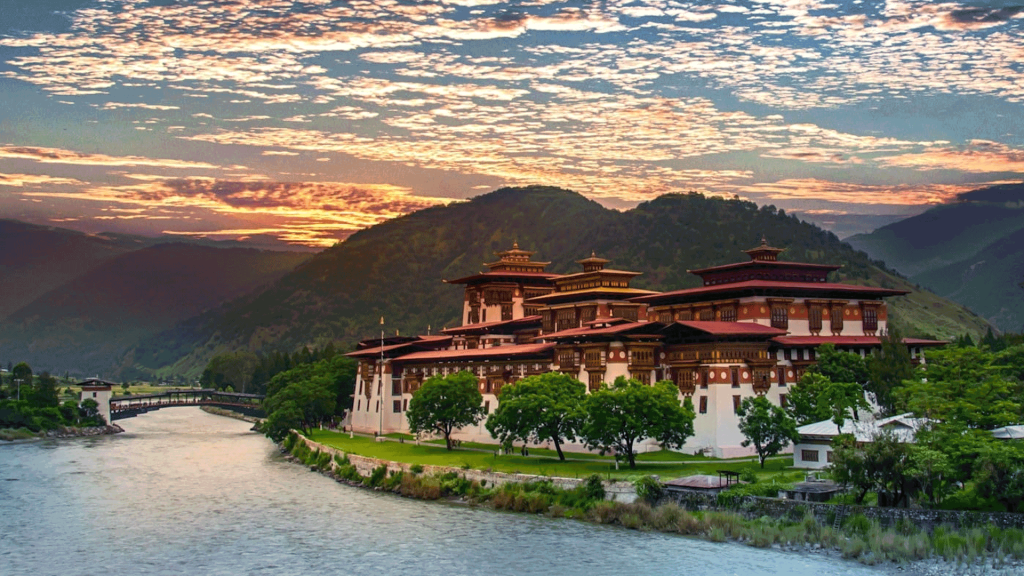
By limiting tourist numbers and imposing a daily fee, Bhutan ensures that tourism contributes positively to its economy without compromising its environmental integrity. This innovative strategy not only protects the country’s natural beauty but also provides a model for sustainable tourism that other nations would do well to emulate.
Bhutan’s success story proves that it is possible to achieve economic progress while safeguarding the environment and preserving cultural heritage. As the world grapples with climate change and over-tourism, Bhutan’s carbon-negative status and controlled tourism model offer a compelling blueprint for a more sustainable and balanced future.
Iceland: Harnessing Nature’s Power for Sustainability
Iceland stands as a shining example of how a nation can harness nature’s power for sustainability. This Nordic island country has masterfully tapped into its abundant geothermal energy, positioning itself as a global leader in renewable resources. By utilizing the earth’s heat, Iceland not only powers homes and businesses but also creates unique attractions like the famous Blue Lagoon.
But Iceland’s commitment to sustainability doesn’t stop there. The country has set new standards for responsible whale watching, ensuring that tourists can marvel at these magnificent creatures without disturbing their natural habitats. Eco-friendly accommodations are springing up across the island, offering travelers the chance to minimize their carbon footprint while enjoying breathtaking views of glaciers and volcanoes.
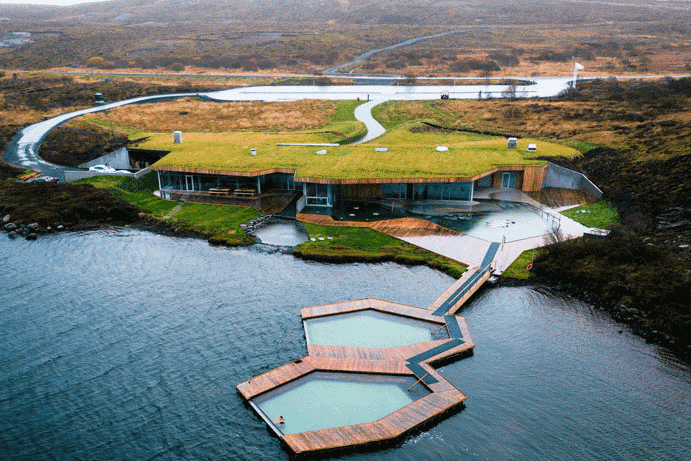
Perhaps most impressively, Iceland has found a way to turn even its most famous natural phenomenon – the Northern Lights – into a sustainable tourism draw. With carefully planned viewing areas and educational programs, visitors can witness this awe-inspiring spectacle while learning about the importance of preserving our planet’s natural wonders.
By visiting Iceland, you’re not just treating yourself to an unforgettable adventure; you’re supporting a nation that’s leading the charge in sustainable living and tourism. It’s time to experience the power of nature and sustainability firsthand in the land of fire and ice.
Finland: Embracing Sustainable Arctic Tourism
Finland’s Arctic region, particularly Lapland, is leading the way in sustainable Arctic tourism. By embracing eco-friendly practices, the country is preserving its pristine wilderness while offering unforgettable experiences to visitors. Sustainable Lapland initiatives are transforming the tourism landscape, with eco-friendly saunas powered by renewable energy and responsible wildlife viewing programs that prioritize animal welfare. These efforts not only protect the fragile Arctic ecosystem but also enhance the authenticity of visitors’ experiences.
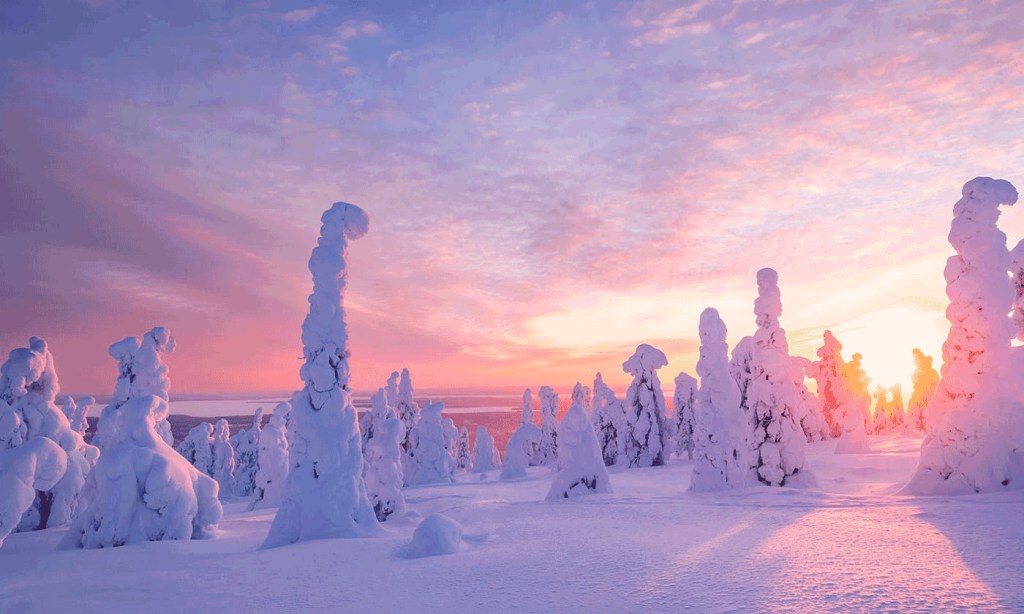
Sustainable design is at the forefront of Finland’s Arctic tourism infrastructure. From ice hotels constructed with minimal environmental impact to glass igloos that blend seamlessly with the landscape, Finland demonstrates that luxury and sustainability can coexist. Crossing the Arctic Circle becomes more than just a bucket list item; it’s an opportunity to witness firsthand how responsible tourism can thrive in one of the world’s most challenging environments.
By choosing Finland for your Arctic adventure, you’re not just embarking on a journey—you’re supporting a vision of sustainable tourism that could set the standard for polar regions worldwide. Experience the magic of the Northern Lights, immerse yourself in Sami culture, and explore vast wilderness areas, all while knowing that your visit contributes to the long-term preservation of this unique corner of the world.
Galapagos Islands: Balancing Tourism and Conservation
Balancing tourism and conservation is a delicate yet crucial task that destinations worldwide must master. By implementing sustainable practices, we can preserve natural habitats while still allowing visitors to experience their beauty. Eco-friendly accommodations, controlled visitor numbers, and educational programs are key strategies in this balancing act. Responsible tourism not only protects fragile ecosystems but also ensures long-term economic benefits for local communities.

Travelers play a vital role too; by choosing eco-conscious options and respecting wildlife, they become part of the solution. Innovative technologies, such as virtual reality experiences, can help reduce physical impact on sensitive areas. Ultimately, striking this balance isn’t just beneficial—it’s essential for the future of both tourism and our planet’s precious natural wonders.
Rwanda: Eco-Tourism Supporting Wildlife and Communities
Rwanda’s commitment to eco-tourism is revolutionizing wildlife conservation and community development. By focusing on gorilla conservation, the country has created a sustainable model that benefits both nature and local communities. Visitors can now experience close encounters with mountain gorillas while directly contributing to their protection.
Community-based tourism initiatives have empowered residents, providing them with alternative livelihoods and a stake in conservation efforts. This approach has led to a significant decrease in poaching and habitat destruction, as communities now see the long-term value in preserving their natural heritage.
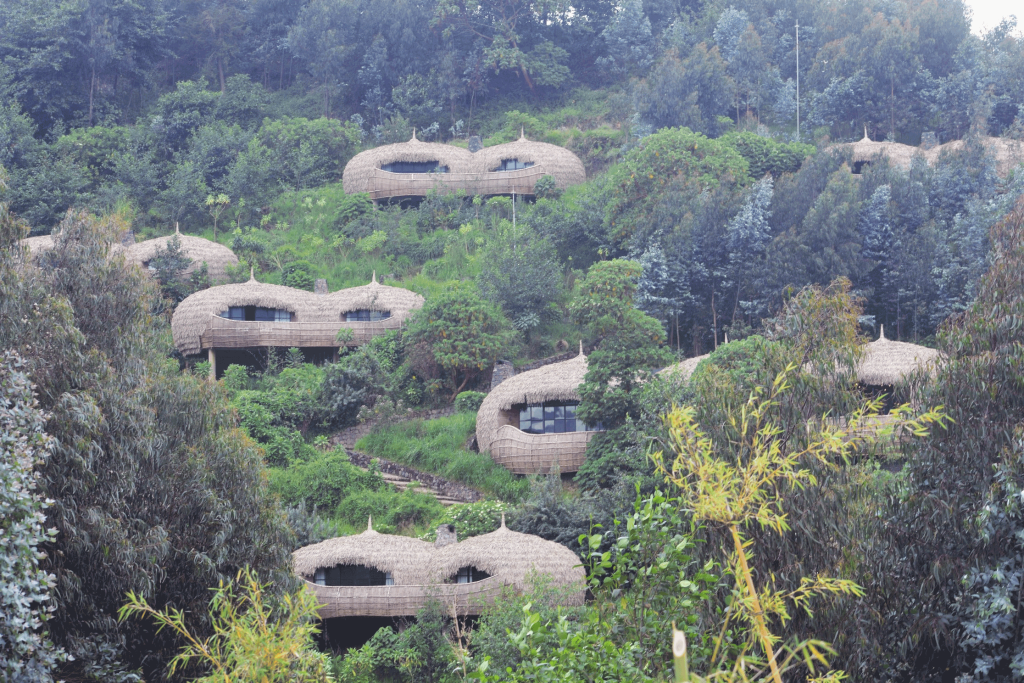
Reforestation efforts, supported by tourism revenue, are restoring critical habitats and combating climate change. The country’s dedication to planting millions of trees annually is visibly transforming landscapes and improving biodiversity.
Eco-lodges, designed with sustainability in mind, offer travelers immersive experiences while minimizing environmental impact. These accommodations not only provide comfort but also serve as educational hubs, raising awareness about conservation challenges and successes.
Rwanda’s approach to sustainable development through eco-tourism serves as a compelling model for other nations. By prioritizing wildlife protection, community engagement, and environmental restoration, the country is securing a brighter future for both its people and its unique natural treasures.
How to Make Your Trip More Sustainable: Tips and Tricks
Embracing sustainable travel isn’t just a trend; it’s a responsibility we all share. Start by choosing eco-friendly accommodations that prioritize energy efficiency and waste reduction. Opt for locally-owned guesthouses or hotels with green certifications to support the community and minimize your environmental impact.
Carbon offsetting is a powerful tool to neutralize your travel footprint. Invest in verified projects that plant trees or support renewable energy initiatives. Remember, every little bit counts towards a greener planet.
Immerse yourself in local experiences to truly connect with your destination. Seek out responsible tour operators who prioritize conservation and community welfare. These guides often provide authentic insights while ensuring your tourism dollars benefit local economies.
One of the simplest yet most effective ways to travel sustainably is by reducing plastic waste. Pack a reusable water bottle, shopping bag, and utensils. Say no to single-use plastics and opt for products with minimal packaging.
By implementing these tips, you’re not just having a vacation – you’re making a positive impact. Sustainable travel allows us to explore the world while preserving its beauty for future generations. Choose to travel responsibly; your planet will thank you.
Conclusion: Embrace Sustainable Travel for a Better World
As we conclude our journey through sustainable travel, it’s clear that the choices we make as travelers have far-reaching impacts. By embracing eco-friendly practices, supporting local communities, and being mindful of our carbon footprint, we can transform the way we explore our planet. Sustainable travel isn’t just a trend; it’s a necessity for preserving the beauty and diversity of our world for future generations.
Remember, every small step counts. Whether it’s choosing a green hotel, opting for public transportation, or simply being more conscious of your waste, you’re contributing to a larger movement. As more travelers adopt these practices, we create a ripple effect that encourages the tourism industry to prioritize sustainability.
Let’s challenge ourselves to travel more responsibly. By doing so, we not only enrich our own experiences but also ensure that the destinations we love remain vibrant and accessible for years to come. The future of travel lies in our hands – let’s make it a sustainable one. Your next adventure awaits, and with it, the opportunity to make a positive difference in the world. Are you ready to embark on this rewarding journey towards sustainable travel?
Asia
The Ultimate Guide to Exploring Beauty of Bangladesh
Discovering the Beauty and Diversity of Bangladesh
Bangladesh, a South Asian country, has remarkable beauty and a rich cultural heritage. From its vibrant traditions to diverse landscapes, exploring Bangladesh offers an unforgettable experience that captivates the soul. At the heart of Bangladeshi culture lies a blend of ancient history and modern influences, creating a unique tapestry that reflects the nation’s journey through time.
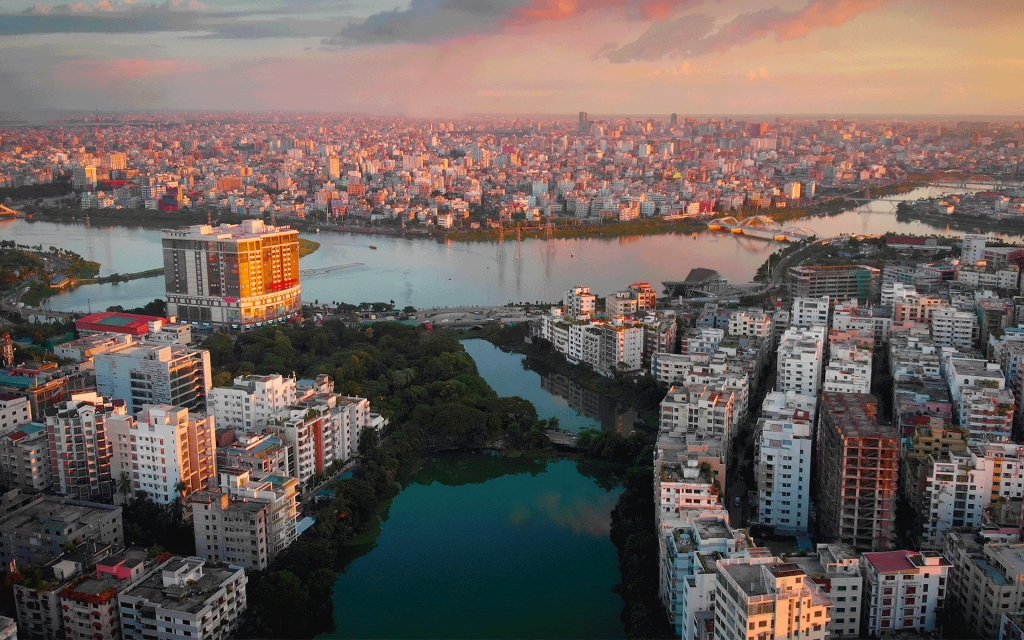
An introduction to Bangladesh reveals a nation steeped in history, with roots tracing back to ancient civilizations. The country’s cultural wealth is evident in its traditional music, dance, and art forms passed down through generations. Festivals like Pohela Boishakh (Bengali New Year) and Durga Puja showcase the community spirit and deep-rooted customs integral to Bangladeshi life.
Exploring Bangladesh also means delving into its natural wonders. The Sundarbans mangrove forest, home to the majestic Bengal tiger, and Cox’s Bazar, boasting one of the longest natural sea beaches in the world, are just glimpses of the country’s diverse landscapes. Each region offers something unique—lush tea gardens in Sylhet or historical landmarks like the ancient city of Paharpur.
Bangladeshi heritage is not only preserved through its monuments but also through everyday life. The warmth and hospitality of its people provide an authentic glimpse into their way of life. Whether wandering through bustling markets or enjoying a traditional meal with locals, you’ll find that every moment spent here adds depth to your understanding of this beautiful nation.
A Rich Cultural Tapestry: Traditions and Festivals in Bangladesh
Bangladesh is a nation steeped in vibrant traditions and rich cultural heritage, where festivals and cultural activities play a pivotal role in the lives of its people. The tapestry of Bangladeshi culture is woven with threads of history, religion, and community spirit, making it a fascinating subject for anyone interested in the diverse customs of South Asia.
One of the most prominent Bangladesh traditions is Pahela Baishakh, the Bengali New Year. Celebrated on April 14th, this festival marks the first day of the Bengali calendar. People from all walks come together to enjoy colorful processions, traditional music and dance performances, and various local delicacies. The festival embodies the essence of Bengali culture—joyous communal participation and deep-rooted artistic expression.
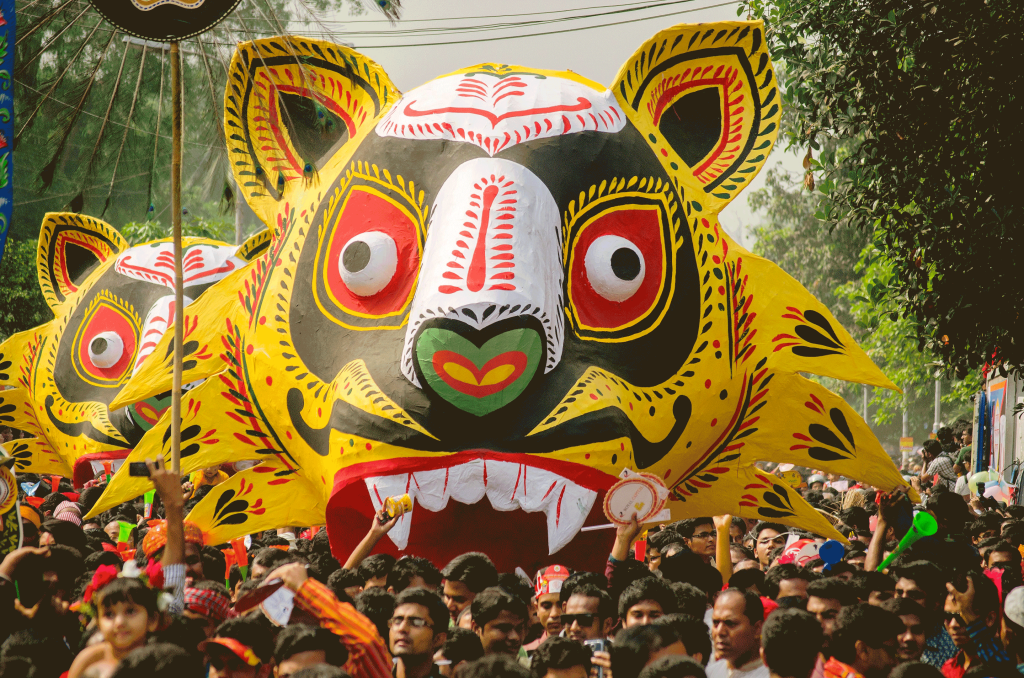
Another significant event is Durga Puja, a major Hindu festival that honors Goddess Durga. This multi-day celebration involves elaborate rituals, beautifully crafted idols, and community gatherings highlighting religious devotion and artistic craftsmanship. In cities like Dhaka and Chittagong, pandals (temporary structures) are set up to showcase intricate decorations that attract visitors from all over.
Eid-ul-Fitr and Eid-ul-Adha are two crucial Islamic festivals celebrated wildly across Bangladesh. These events mark critical religious observances and feature communal prayers, feasting, charity work (Zakat), and family gatherings. They serve as occasions for reinforcing social bonds within the Muslim community.
In addition to these major festivals, Bangladesh hosts numerous regional fairs known as “melas,” which celebrate everything from local crafts to agricultural produce. These meals are integral to cultural activities in Bangladesh as they offer platforms for artisans to display their skills while fostering economic activities within rural communities.
Top Tourist Attractions You Must Visit in Bangladesh
Bangladesh has a rich cultural heritage, stunning landscapes, and historical significance. For travelers seeking unique experiences, the country offers many tourist attractions that will leave lasting impressions. Here are some top tourist attractions in Bangladesh you must visit:
Sundarbans Mangrove Forest: As the largest mangrove forest in the world and a UNESCO World Heritage Site, the Sundarbans is home to the majestic Bengal tiger. It’s an ideal travel destination for nature enthusiasts who enjoy wildlife and tranquil surroundings.
Cox’s Bazar: Known for having the longest natural sea beach in the world, Cox’s Bazar is one of the best places for beach lovers to visit in Bangladesh. The serene coastline stretches over 120 kilometers and offers breathtaking sunsets.
Srimangal: Often called the “Tea Capital of Bangladesh,” Srimangal is famous for its lush tea gardens, rolling hills, and vibrant biodiversity. It’s a perfect spot for relaxing in nature’s lap.
Historical Sites in Dhaka: The capital city of Dhaka boasts several significant sightseeing spots, such as Lalbagh Fort, Ahsan Manzil (Pink Palace), and Liberation War Museum. These sites offer deep insights into Bangladesh’s history and culture.
Sylhet: Nestled among picturesque hills and rivers, Sylhet is another gem among travel destinations in Bangladesh. It’s known for its spiritual significance, and numerous shrines like Hazrat Shah Jalal Mazar Sharif attract pilgrims worldwide.
Rangamati: Located within the Chittagong Hill Tracts, Rangamati offers stunning landscapes, with lakes such as Kaptai Lake being prominent attractions. It’s an excellent place for boating, hiking, and experiencing indigenous cultures.
Exploring these tourist attractions in Bangladesh provides visual delight and an enriching cultural experience that reflects the country’s diverse heritage and natural beauty.
Culinary Delights: A Guide to Bangladeshi Cuisine
Bangladesh, a country known for its rich cultural heritage, offers a culinary landscape that is both diverse and deeply rooted in tradition. This Bangladeshi food guide aims to introduce you to Bangladesh’s vibrant flavors and traditional dishes that have been cherished for generations.
One of the most iconic aspects of Bengali cuisine is its use of spices. Traditional dishes of Bangladesh often feature a harmonious blend of turmeric, cumin, coriander, and mustard seeds, creating layers of complex flavors. A staple in many households is “Bhuna Khichuri,” a comforting dish from rice and lentils cooked with aromatic spices and often accompanied by fried hilsa fish or eggplant fritters.
In the bustling capital city of Dhaka, street food culture thrives with popular foods that are both affordable and delectable. Among these are “Fuchka” (Pani Puri), crispy hollow spheres filled with spicy tamarind water, chickpeas, and potatoes – a must-try for any visitor. Another beloved street food is “Chotpoti,” which consists of peas served with boiled eggs, potatoes, tamarind sauce, and various spices.
For those seeking heartier fare, “Kacchi Biryani” is a quintessential Bangladeshi dish. This fragrant rice dish is cooked with marinated mutton or chicken layered between aromatic basmati rice seasoned with saffron and ghee. The slow-cooking process ensures that every bite is infused with flavor.
As you explore Bengali cuisine further, don’t miss out on sweet treats like “Rasgulla” – soft cheese balls soaked in sugary syrup – or “Mishti Doi,” a traditional sweetened yogurt that offers a perfect ending to any meal.
Whether sampling popular foods in Dhaka’s vibrant markets or indulging in home-cooked traditional dishes of Bangladesh, each bite promises to be an unforgettable experience steeped in history and flavor.
Navigating Through the Cities: Transport and Travel Tips for Tourists
Traveling around Bangladesh can be an exhilarating experience, but navigating its bustling cities requires some preparation. Dhaka, the capital city, is known for its vibrant atmosphere and dense traffic. Understanding the nuances of transportation in Dhaka is crucial for any tourist aiming to make the most of their visit.
One of the most popular modes of transportation in Dhaka is the rickshaw. These three-wheeled, pedal-powered vehicles are ideal for short distances and provide a unique way to experience the city’s lively streets. However, agreeing on a fare with the driver before starting your journey is advisable to avoid any misunderstandings.
CNG auto-rickshaws and taxis are more convenient options for longer distances within Dhaka or when traveling between cities. CNGs (Compressed Natural Gas vehicles) are faster than rickshaws but still relatively economical. Taxis offer a more comfortable ride, especially during hot weather or heavy rain.
Public buses are another option for tourists who want to travel like locals. Although they can be crowded and sometimes challenging to navigate due to language barriers, they offer an authentic glimpse into daily life in Bangladesh. Ride-sharing apps like Uber have become increasingly popular for those looking for comfort and convenience.
Trains can be an excellent choice when planning trips outside Dhaka or exploring other parts of Bangladesh. The railway network connects major cities and offers various classes of service, from basic seating to air-conditioned compartments. Trains provide a scenic way to see the countryside while avoiding road traffic.
Lastly, domestic flights are available for tourists who wish to travel quickly between distant locations within Bangladesh. Major airlines operate regular flights connecting Dhaka with cities like Chittagong, Sylhet, and Cox’s Bazar.
By familiarizing yourself with these transportation options and planning accordingly, you can easily navigate through Dhaka and beyond—making your trip both enjoyable and memorable.
Embrace the Wonders of Bangladesh on Your Next Adventure!
Bangladesh, a country rich in history, culture, and natural beauty, offers an array of experiences that cater to every type of traveler. From the bustling streets of Dhaka to the serene landscapes of the Sundarbans mangrove forest, this South Asian gem promises unforgettable adventures.
For history enthusiasts, ancient cities like Mahasthangarh and Paharpur provide a glimpse into the country’s storied past. Nature lovers will find solace in the lush greenery of Srimangal’s tea gardens or the tranquil beaches of Cox’s Bazar. The diverse wildlife in places like Lawachara National Park and Ratargul Swamp Forest will captivate any visitor.
Moreover, Bangladesh’s vibrant culture is evident in its festivals, cuisine, and warm hospitality. Whether exploring local markets or savoring traditional dishes like biryani and pitha, you’ll discover a unique blend of flavors and traditions.
Asia
Discover Japan with the Ultimate Japan Tour Guide
Why You Need a Comprehensive Japan Tour Guide for Your Trip
Planning a trip to Japan can be both exciting and overwhelming. A comprehensive Japan tour guide is invaluable for navigating this unique and diverse country. With such a resource, you can streamline your Japan travel planning, ensuring you don’t miss out on must-see attractions and hidden gems.
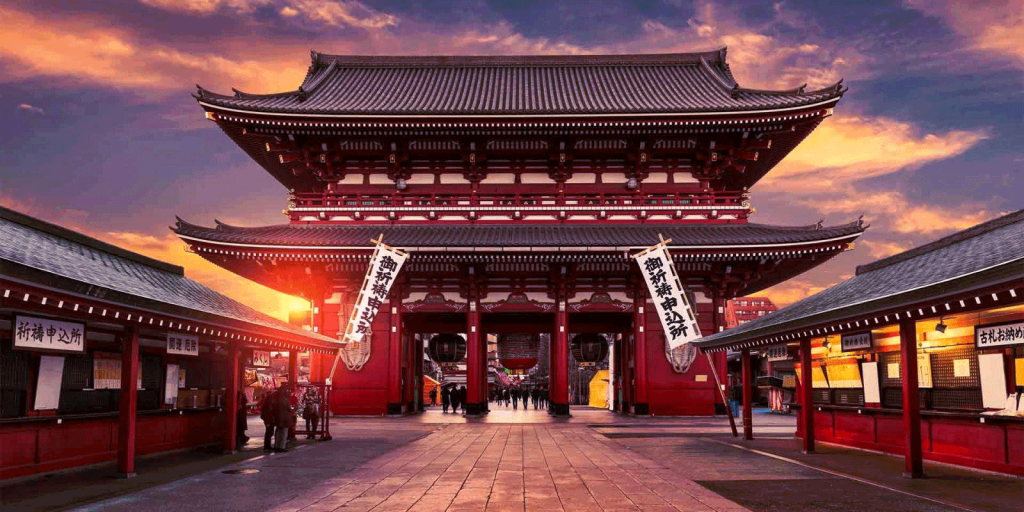
A well-crafted Japan travel itinerary will help you make the most of your time, whether you’re exploring the bustling streets of Tokyo or the serene temples of Kyoto. Guided tours in Japan offer insider knowledge beyond what you’ll find in standard travel tips for Japan. They provide context and history, enriching your experience.
Top Must-Visit Destinations in Japan
Exploring Japan offers a blend of traditional and modern experiences that are hard to find elsewhere. Tokyo attractions, for instance, cater to tech enthusiasts and culture buffs alike. There’s something for everyone from the bustling Shibuya Crossing to the serene Meiji Shrine.
Kyoto temples are a must-see. The golden Kinkaku-ji and the sprawling Fushimi Inari-taisha with its iconic red torii gates provide glimpses into Japan’s rich history and spiritual heritage. Each temple visit feels like stepping back in time.
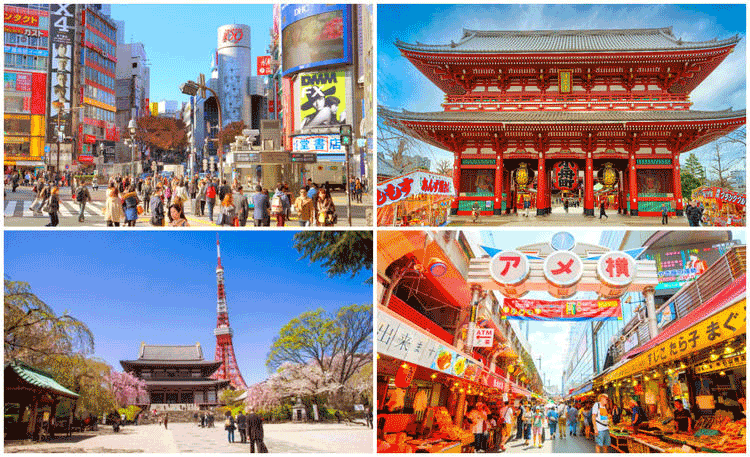
Osaka food tours are legendary. Known as Japan’s kitchen, Osaka tempts you with street foods like takoyaki (octopus balls) and okonomiyaki (savory pancakes). It’s a culinary adventure you won’t want to miss.
For nature lovers, Hokkaido nature spots offer breathtaking landscapes all year round. Whether it’s the flower fields of Furano in summer or the powdery snow of Niseko in winter, Hokkaido showcases Japan’s natural beauty at its finest.
These must-see places in Japan promise diverse experiences that leave lasting memories. Whether you’re drawn by urban excitement or tranquil retreats, Japan has it all waiting for you.
Cultural Etiquette and Tips for Traveling in Japan
Traveling to Japan offers a unique and enriching experience, but understanding Japanese customs for tourists is essential to ensure a respectful visit. Here are some etiquette tips for navigating the cultural landscape:
Bowing: A simple bow is a common greeting. It’s respectful and shows gratitude or acknowledgment.
Shoes Off: Always remove your shoes when entering someone’s home, certain traditional accommodations, and even some temples.
Quiet in Public Spaces: Japanese culture values harmony and quietness in public areas like trains and buses. Keep conversations low-key.
Cash is King: Though credit cards are becoming more accepted, carrying cash is advisable as many places still prefer it.
No Tipping: Unlike many Western countries, tipping can be seen as rude or unnecessary in Japan.
Understanding these do’s and don’ts in Japan will help you blend seamlessly into the local culture while showing respect for their traditions.
The Best Time to Visit Japan: Season-by-Season Breakdown
When planning a trip to Japan, timing is everything. Each season offers unique experiences that cater to different interests.
Spring, particularly late March to early April, is synonymous with cherry blossom season tours. Tokyo and Kyoto transform into picturesque landscapes filled with pink blooms. This period is perfect for those who want to witness Japan’s iconic Sakura in full bloom.
Summer can be hot and humid, but it’s also festival season. Cities like Tokyo buzz with energy during events such as the Sumida River Fireworks Festival. If you can handle the heat, this time offers vibrant cultural experiences and lively street scenes.
Autumn brings cooler temperatures and stunning fall foliage. From mid-October to early December, places like Nikko and Kyoto showcase brilliant reds and oranges. This season provides a serene backdrop for exploring temples and gardens.

Winter transforms Hokkaido into a winter wonderland with its famous winter festivals in Sapporo. Skiing enthusiasts will find excellent conditions in resorts like Niseko from December through February.
Choosing the best time to visit Japan depends on what you want to experience. Whether it’s cherry blossoms in spring or winter festivals in Hokkaido, each season has something special to offer.
Savoring Japanese Cuisine: A Culinary Adventure Awaits
Embark on a culinary journey that promises to delight your taste buds and expand your gastronomic horizons. Begin with a sushi-tasting tour in Tokyo, where master chefs craft each piece with precision and artistry. The freshness of the fish, the perfect balance of rice, and the subtlety of flavors will leave you craving more.
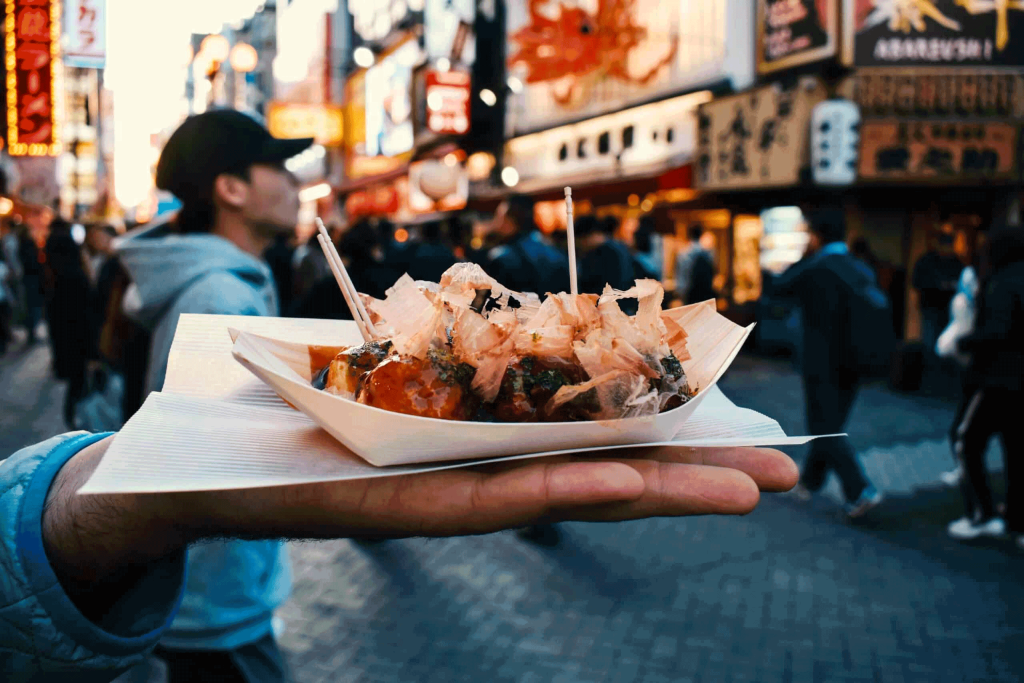
Next, head to Kyoto’s ramen shops. Here, you’ll discover bowls of steaming noodles immersed in rich broths that have simmered for hours. From shoyu to tonkatsu, each variety offers a unique experience that’s deeply rooted in tradition yet bursting with innovation.
Take advantage of Osaka’s vibrant street food scene. An Osaka street food guide will lead you through bustling markets where you can savor takoyaki—crispy octopus balls—or okonomiyaki, a savory pancake loaded with toppings. The energy is palpable as vendors skillfully prepare these dishes right before your eyes.
These Japanese culinary experiences are more than just meals; they’re an exploration of culture and history through flavor. Whether you’re a seasoned foodie or new to Japanese cuisine, this adventure promises unforgettable tastes and memories.
Navigating Transportation in Japan: From Shinkansen to Local Buses
Navigating Japan’s transportation network can seem daunting, but with some practical tips, it becomes manageable and even enjoyable. When traveling by train in Japan, tips like understanding the difference between Shinkansen (bullet trains) and local trains are essential. The Shinkansen offers speed and efficiency for long distances, while regional trains provide access to smaller towns.
Comparing trains vs buses in Japan reveals that trains generally offer a faster and more straightforward way to travel between major cities. However, buses can be more economical for shorter distances or routes not covered by rail.
A key resource is the Japan Rail Pass guide. This pass is invaluable for tourists planning extensive travel within a set period. It allows unlimited use of JR trains, including some Shinkansen lines, which is ideal for exploring multiple regions.
For everyday journeys, Japanese public transport tips include purchasing an IC card like Suica or Pasmo. These cards simplify payments across various transport modes without needing separate tickets each time you board a bus or train.
Packing Essentials for Your Japanese Adventure
When planning your Japanese adventure, packing smartly is crucial to ensure a smooth trip. Understanding the essentials for Japan’s diverse weather and knowing what to pack can make all the difference.
Firstly, consider Japan’s varied climate. If you’re visiting in spring or autumn, pack layers: lightweight sweaters and a good jacket are key. Summer demands light clothing and plenty of sun protection—think hats and sunscreen. Winter travelers should focus on warm coats, thermal wear, and waterproof boots for snowy regions.
Power adapters are another must-have. Japan uses Type A plugs with 100-volt electricity. Ensure your electronics are compatible, or bring a reliable power adapter to keep your devices charged.
Choosing the best luggage is also vital for navigating Japan’s efficient but sometimes crowded public transport system. Opt for lightweight, durable suitcases with smooth wheels; they’re easier to handle on trains and buses. A small backpack or daypack will be invaluable for daily excursions.
Asia
Discover Bangkok: The Ultimate Travel Guide to Thailand’s Vibrant Capital
Why Bangkok Should Be Your Next Travel Destination
Bangkok, the bustling capital of Thailand, is a city that effortlessly blends the old with the new, making it an irresistible destination for travellers. From its ornate temples and vibrant street markets to its modern shopping malls and dynamic nightlife, there are countless reasons why Bangkok should be your next travel destination.
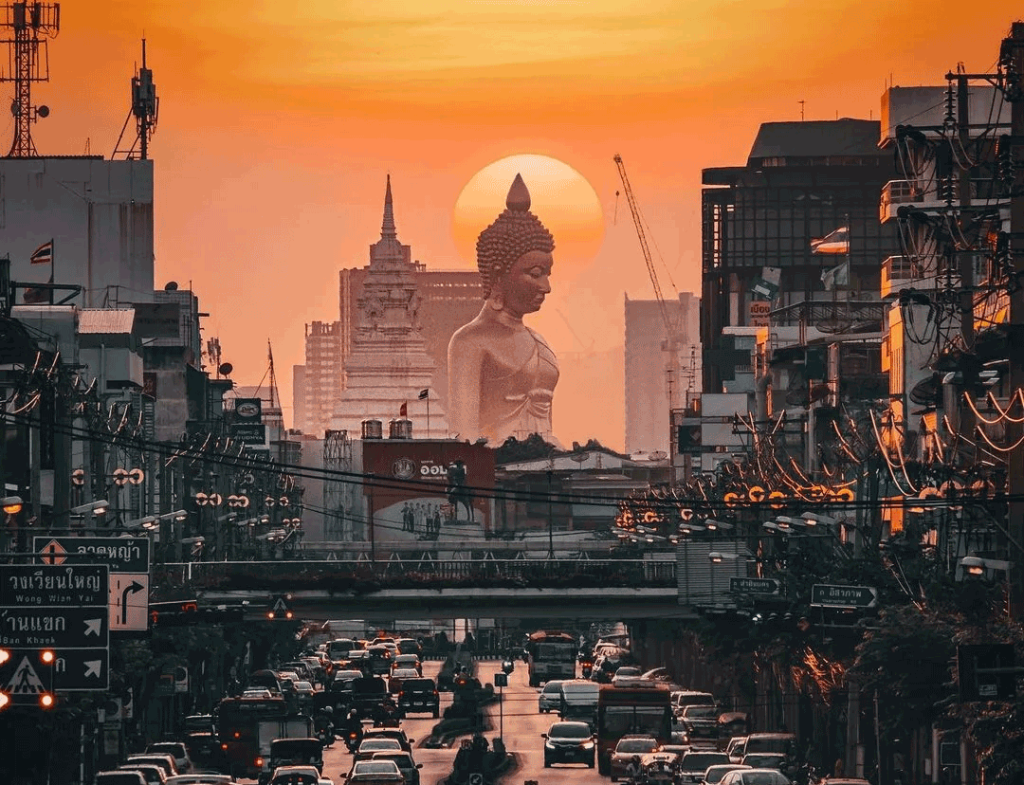
First and foremost, discover Bangkok’s rich cultural heritage by visiting iconic landmarks such as the Grand Palace and Wat Pho. These historical sites offer a glimpse into Thailand’s royal past and are adorned with intricate architectural details that captivate visitors.
For those seeking a more contemporary experience, Bangkok’s shopping scene is unparalleled. The city boasts everything from high-end luxury malls like Siam Paragon to bustling street markets such as Chatuchak Weekend Market. Whether you’re hunting for designer goods or unique local crafts, this travel guide to Bangkok will lead you to endless shopping opportunities.
Food lovers will find themselves in paradise as they explore Bangkok’s culinary landscape. Street food stalls serve up mouth-watering dishes like Pad Thai and Mango Sticky Rice at incredibly affordable prices. For a more upscale dining experience, the city offers numerous fine-dining restaurants that fuse traditional Thai flavours with modern culinary techniques.
The reasons to visit Thailand’s capital extend beyond its attractions; it’s also about the experiences you’ll have interacting with locals who embody the country’s renowned hospitality. Engaging with friendly residents can provide deeper insights into Thai culture and make your trip even more memorable.
Top Attractions You Must See in Bangkok
Bangkok, the vibrant capital of Thailand, is a city teeming with history, culture, and a plethora of attractions that beckon travellers from around the globe. When visiting this bustling metropolis, several must-see places should be at the top of your itinerary.

First and foremost is the Grand Palace. This iconic landmark has been the heart of Bangkok since 1782 and served as the royal residence for generations. The Grand Palace complex houses intricate buildings adorned with stunning architecture and exquisite details. It’s not just a historical site but also a symbol of Thailand’s rich heritage.
Next on the list is Wat Arun, also known as the Temple of Dawn. Located on the west bank of the Chao Phraya River, Wat Arun stands majestically with its towering spires that glisten in sunlight. This temple is exceptionally breathtaking at sunset when it casts an ethereal glow over Bangkok’s skyline.
Another essential stop is Wat Pho, home to the famous Reclining Buddha statue. This temple complex offers more than just spiritual enlightenment; it’s also renowned for being one of Thailand’s premier massage schools. Visitors can explore its serene courtyards and marvel at over 1,000 Buddha images scattered throughout.
A visit to Bangkok would only be complete with experiencing its floating markets. These markets offer a unique glimpse into traditional Thai life, where vendors sell fresh produce and local delicacies from boats along narrow canals. Among them, the Damnoen Saduak Floating Market remains one of the most popular places for tourists seeking an authentic shopping experience on the water.
Each of these Bangkok attractions provides a distinct window into Thailand’s cultural tapestry, making them indispensable stops for any traveller aiming to immerse themselves fully in this dynamic city’s allure.
Culinary Delights: Exploring the Best Street Food and Restaurants in Bangkok
When it comes to culinary delights, Bangkok stands out as a paradise for food lovers. The city offers an eclectic mix of street food and high-end dining experiences that cater to every palate. Exploring Bangkok’s street food is an adventure in itself. From the bustling streets of Yaowarat (Chinatown) to the vibrant stalls of Khao San Road, the options are endless. Must-try dishes include Pad Thai, Som Tum (papaya salad), and Moo Ping (grilled pork skewers). These iconic foods not only capture the essence of Thai cuisine but also provide a glimpse into the daily life of Bangkok’s locals.
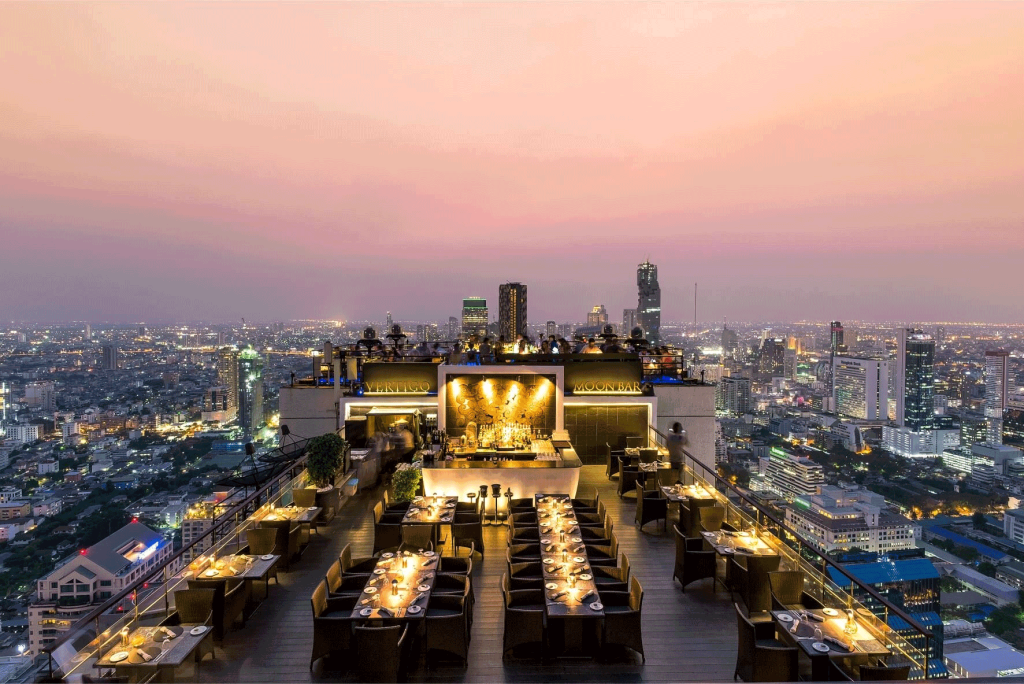
For those seeking a more refined dining experience, Bangkok boasts some of the best restaurants in Asia. Sühring offers modern German cuisine with a touch of Thai influence, while Gaggan Anand serves progressive Indian dishes that have earned global acclaim. For authentic Thai cuisine in an upscale setting, Bo. Lan and Nahm are top choices that showcase traditional recipes with contemporary twists.
Whether you’re indulging in street food or dining at Michelin-starred restaurants, knowing where to eat in Bangkok can elevate your culinary journey. The city’s dynamic food scene promises an unforgettable gastronomic experience that reflects its rich cultural heritage and innovative spirit.
The Best Shopping Destinations in Bangkok for All Budgets
Bangkok, Thailand’s bustling capital, is a paradise for shoppers of all budgets. Whether you’re hunting for high-end brands or seeking unique bargains, the city offers a diverse range of shopping experiences that cater to every pocket.
One of the most iconic spots for budget shopping in Bangkok is Chatuchak Market. Known as one of the largest weekend markets in the world, Chatuchak boasts over 15,000 stalls selling everything from clothing and accessories to home decor and antiques. It’s an ideal destination for those looking to experience local culture while snagging great deals.
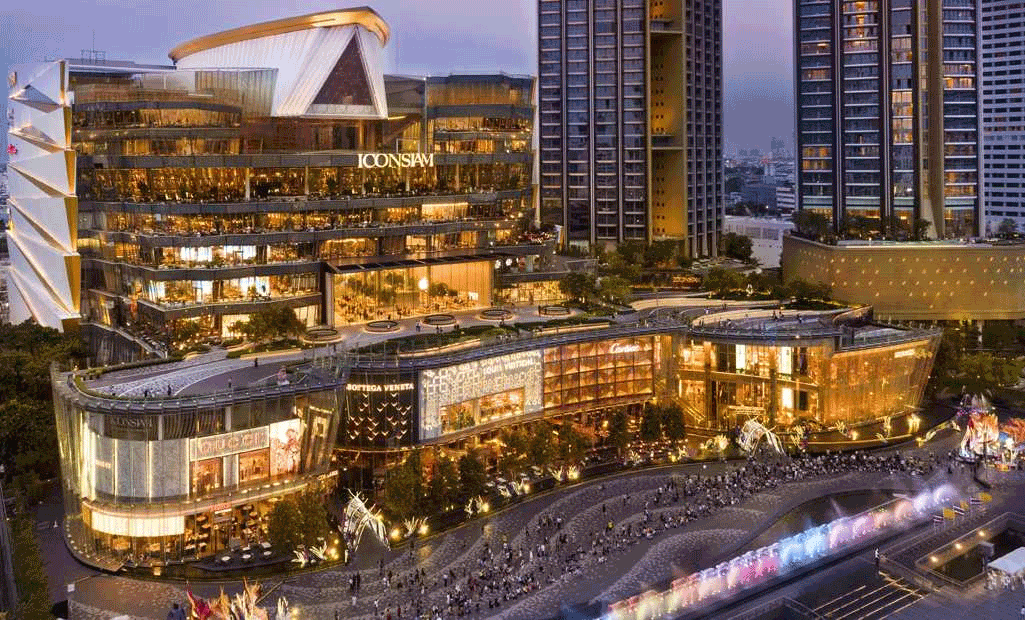
For those with a taste for luxury, Siam Paragon Mall stands out as a premier shopping destination. Located in the heart of Bangkok, this upscale mall features an array of high-end international brands, fine-dining restaurants, and even an aquarium. It’s perfect for shoppers who are looking to indulge in some retail therapy amidst opulent surroundings.
Whether you’re on a tight budget or ready to splurge, shopping in Bangkok offers something for everyone. From the vibrant chaos of Chatuchak Market to the sophisticated elegance of Siam Paragon Mall, Thailand’s capital ensures that every shopper leaves satisfied and eager to return.
Navigating Transportation: How to Get Around Efficiently in the City of Angels
Bangkok, often referred to as the “City of Angels,” offers a variety of transportation options that cater to both locals and tourists. Understanding these modes can significantly enhance your experience and efficiency when getting around Bangkok.
One of the most popular and convenient ways to navigate the city is via the BTS Skytrain. This elevated train system covers major commercial areas, making it an ideal choice for avoiding traffic congestion. The BTS Skytrain is known for its punctuality, cleanliness, and air-conditioned comfort, which provides a respite from Bangkok’s tropical heat.
For those looking for a more traditional experience, tuk-tuks offer an iconic way to travel short distances. These three-wheeled vehicles are not only fun but also provide a quick means to manoeuvre through narrow streets and busy markets. However, it’s advisable to agree on a fare before starting your journey to avoid any misunderstandings.
Taxis are another reliable option for getting around Bangkok. They are relatively inexpensive compared to Western standards and can be hailed easily on most streets or booked through various apps. Most taxis are metered; however, during peak hours or heavy rain, drivers might negotiate fares instead.
Each mode of transportation in Bangkok has its own set of advantages depending on your needs—whether it’s speed, comfort, or experiencing local culture. By familiarizing yourself with these options—BTS Skytrain for efficiency, tuk-tuks for short trips and cultural immersion, and taxis for door-to-door convenience—you can navigate this bustling metropolis with ease.
Cultural Etiquette: Do’s and Don’ts When Visiting Buddhist Temples and Local Markets
When visiting Thailand, understanding cultural etiquette is crucial for a respectful and enriching experience. This is particularly important when exploring Buddhist temples and local markets. Here are some essential dos and don’ts to keep in mind.
Buddhist Temple Etiquette
Do’s:
Dress Modestly: Wear clothing that covers your shoulders and knees. This shows respect for the sacredness of the temple.
Remove Footwear: Always take off your shoes before entering a temple building.
Be Quiet: Speak softly to maintain the peaceful atmosphere of the temple grounds.
Show Respect to Buddha Images: Treat all Buddha images with great respect; avoid touching or climbing on them.
Don’ts:
Avoid Pointing Feet: Never point your feet at Buddha images or monks, as feet are considered the least sacred part of the body.
Refrain from Public Displays of Affection: Holding hands or kissing within temple grounds is inappropriate.
Don’t Touch Monks if You’re Female: Women should not touch monks, as it is against monastic rules.
Local Market Customs
Do’s:
Bargain Politely: Haggling is common, but always do so with a smile and friendly demeanour.
Respect Personal Space: Thai people value personal space; be mindful not to stand too close when interacting with vendors.
Use Both Hands When Paying: When handing money to someone, use both hands as a sign of respect.
Don’ts:
Avoid Touching Produce Without Permission: Always ask before handling food items at stalls to prevent offending vendors.
Don’t Raise Your Voice: Even during negotiations, keep your tone calm and composed.
Refrain from Pointing Fingers Directly at People or Objects: Use an open hand gesture instead, as pointing can be seen as rude.
By following these tips for travellers on Buddhist temple etiquette and local market customs in Thailand, you’ll ensure that your visit is respectful and enjoyable for both you and the locals you encounter along the way.
The Best Times of Year to Visit and Experience Festivals Unique to the City
When planning a trip to Bangkok, timing can significantly enhance your experience, mainly if you aim to immerse yourself in the city’s vibrant festivals. Understanding the best times to visit and the unique celebrations you can witness is crucial for an unforgettable journey.
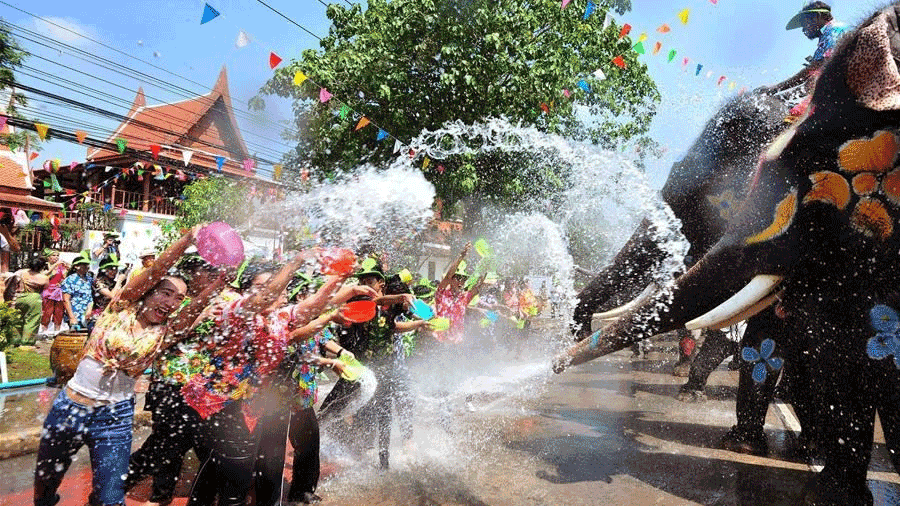
One of the prime times to visit Bangkok is during April when the city comes alive with the Songkran Festival. This Thai New Year celebration transforms Bangkok into a massive water fight arena, symbolizing purification and the washing away of sins. The weather in April is typically hot and humid, but the refreshing water festivities provide a delightful way to cool down.
Another exceptional time to experience Bangkok’s cultural richness is during November for Loi Krathong. This festival of lights involves floating intricately decorated baskets on water bodies as an offering to river spirits. The sight of thousands of glowing krathongs drifting on rivers and canals against the backdrop of fireworks creates a magical atmosphere that shouldn’t be missed.
Additionally, December and January are excellent months for visiting due to favourable weather conditions—cooler temperatures and lower humidity make exploring more comfortable. During this period, you can also partake in New Year celebrations that blend traditional Thai customs with international festivities, offering a unique cultural fusion.
In summary, while each season offers its charm, aligning your visit with these festivals—Songkran in April, Loi Krathong in November, and New Year celebrations in December—will provide enriching experiences that showcase Bangkok’s rich cultural tapestry.
-
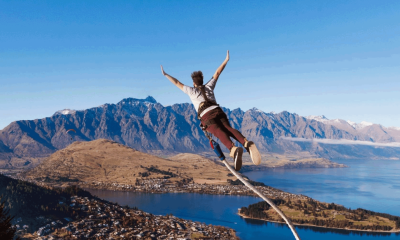
 Africa10 months ago
Africa10 months agoAdventure Travel: Top Destinations for Thrill Seekers That Will Take Your Breath Away
-

 Africa9 months ago
Africa9 months agoWhy Nairobi is the Safari Capital of the World
-

 Europe10 months ago
Europe10 months agoUnveiling the Magic: Why Warner Bros Studio Tour London is a Must-Visit for Harry Potter Fans
-

 Africa10 months ago
Africa10 months agoSeasonal Travel Guide: Unlock the Best Destinations for Every Time of Year
-

 Middle East9 months ago
Middle East9 months agoThe Ultimate Guide to Dubai : Exploring the Jewel of the UAE
-
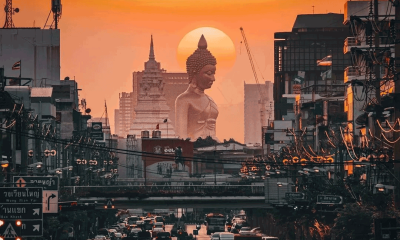
 Asia9 months ago
Asia9 months agoDiscover Bangkok: The Ultimate Travel Guide to Thailand’s Vibrant Capital
-
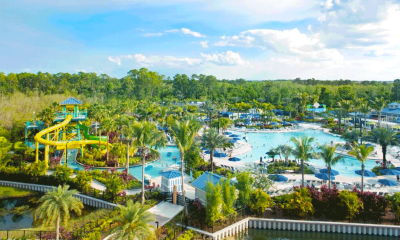
 Europe10 months ago
Europe10 months ago10 Must-Visit Family-Friendly Destinations for Unforgettable Adventures in 2024
-

 Africa9 months ago
Africa9 months agoBest Destinations for Solo Travelers in 2024: Safe and Welcoming Adventures Await





